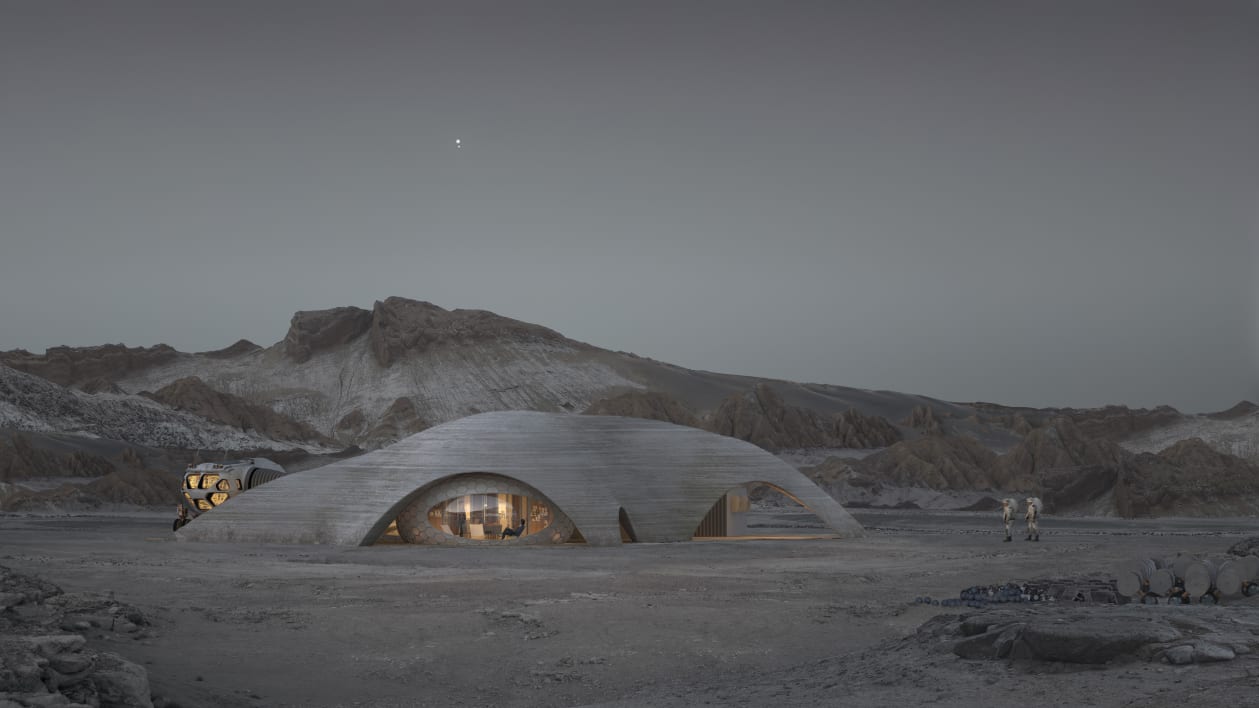 |
| Credit: HASSELL + Eckersley O'Callaghan |
What
would a home on Mars look like? What sort of clothes would we wear on
the Red Planet? And how would we grow our food? The answers to some of
these questions are beautifully imagined in a new exhibition, "Moving to
Mars," at London's Design Museum.
The
race is on for a successful manned mission to Mars, with NASA leading a
pack of public and private institutions competing to be the first to
land, including Elon Musk's Space X, Jeff Bezos' Blue Origin, Boeing,
and the China National Space Administration.
NASA
plans to launch a manned mission in the 2030s, a timeframe shared by
other private groups, although this goal might be more aspirational than
realistic. Many technologies required don't yet exist, including the
spacecraft, which are either under development or at the prototype
stage. What a Mars mission would look like is far from clear, with some
teams planning to build a full-blown Martian habitat, while others
foresee orbiting stations that could function as launch pads for limited
trips to the surface. But it's not too early to dream, nor to start
imagining how it will all take shape.
 |
| The interior of a proposed Mars habitat by London-based design firm Hassell. |
Centered on the role that design will play in sending humans to Mars,
the exhibition is rich with historical materials but also more
forward-looking or speculative elements, with a wide range of works by
designers from various fields.

Curator
Eleanor Watson said the designs on show were response to questions
about future Mars missions. "Such as what would microgravity clothing
need to look like, what would a Mars habitat look like, very speculative
questions on what the planet might look in 1,000 or even 10,000 years,"
said Watson in a phone interview.
Among
the experimental works is a fashion collection by sustainable design
company RÆBURN, which imagines clothing to be used inside Martian
habitats, tailored from recycled spacecraft materials.
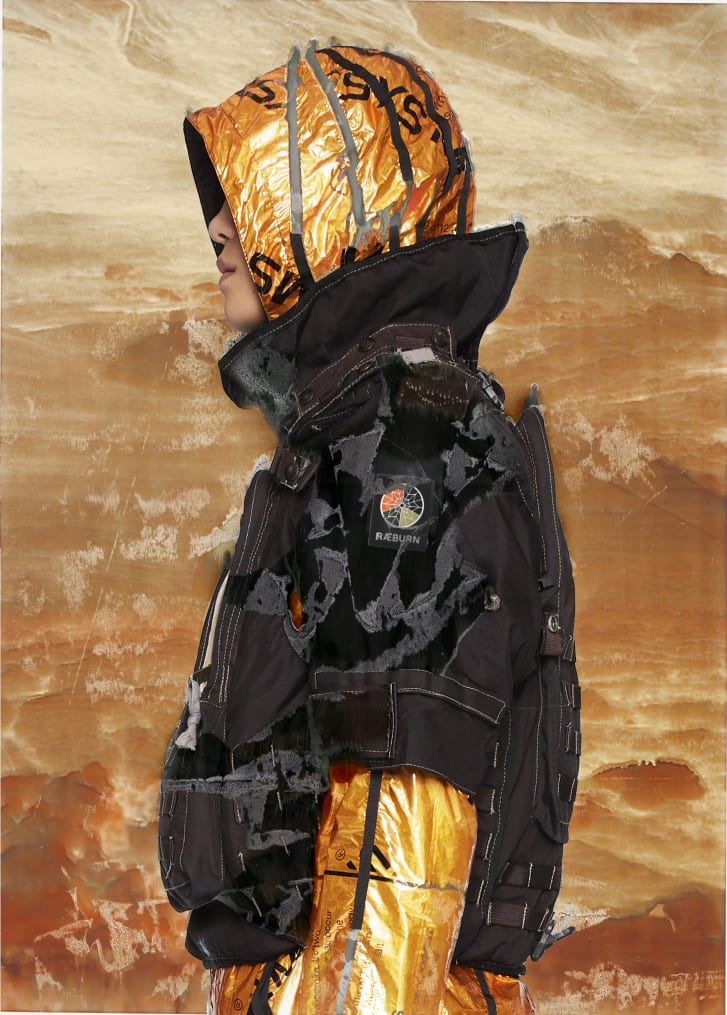 |
| The clothes are made from recycled parachutes and thermal blankets. |
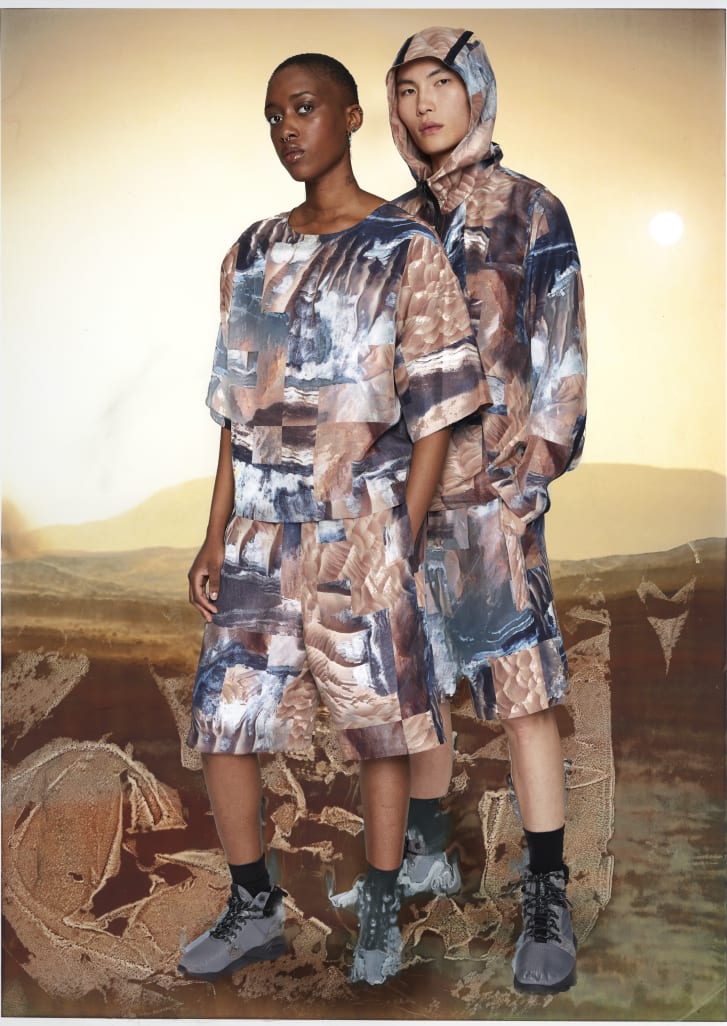 |
| The RÆBURN collection. |
"At $18,000 per kilo of payload, sending stuff to Mars is expensive, so
anything that you bring with you, you have to be able to reuse
intelligently. All of the rovers that are being flown over, for example,
come with landing parachutes. What are you gonna use these parachutes
for after the landing? Well, one option would be to make all of the
clothing for the astronauts from them," said Watson.
The
exhibition includes five architectural projects for potential Mars
habitat modules, all derived from NASA's 3D Printing Habitat Challenge, a
$3 million competition to build 3D-printed homes for deep space
exploration. One of them, by London-based international design firm
Hassell, is scaled up to full size, for people to get into and explore.
"Hassell
very kindly agreed to make a one-to-one scale mockup of one of their
modules and it's six meters in diameter. It includes a system that would
allow you to reconfigure the space easily. They've created a group of
six modules that link together and are covered by a shield to protect
from radiation. These six modules are in a ring, so that you have an
internal courtyard and when you're in one module, even though it's quite
small, there's a big window and you can see across and see what other
people are up to," said Watson.
 |
| The Hassell habitat includes hydroponics. |
Outside of habitats, normal clothes won't cut it in the thin and
unbreathable Martian atmosphere. Astonauts will need space suits, such
as the NDX-1, one of the very first designed for Mars, by two University
of North Dakota engineers, Gary L. Harris and Dr de Leon. Compared to
suits designed for the Apollo Moon program, for example, Mars suits
would need to be much more flexible, as they would be worn for months or
even years rather than just days.
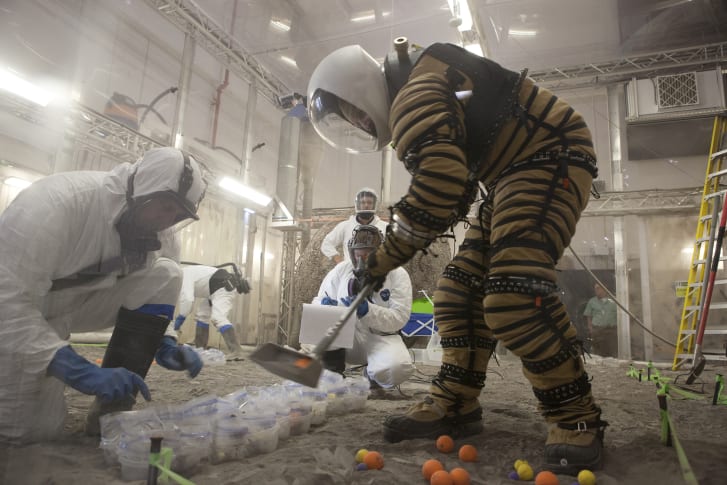 |
| The NDX-1 suit. |
Currently, exploration of Mars is done solely by robots, and there have
been four successful landings of rovers on the surface of the planet,
with only one of them, Curiosity, still operational. The exhibition
includes a replica of Rosalind Franklin, a Mars rover that will be
launched in 2020 by the European Space Agency and will land in 2021.
It's named after an English scientist who made crucial discoveries about
DNA, and was previously known as ExoMars. "It's a lab on wheels and
it's going to drill quite far down into the Martian surface, to try and
find traces of life," said Watson.
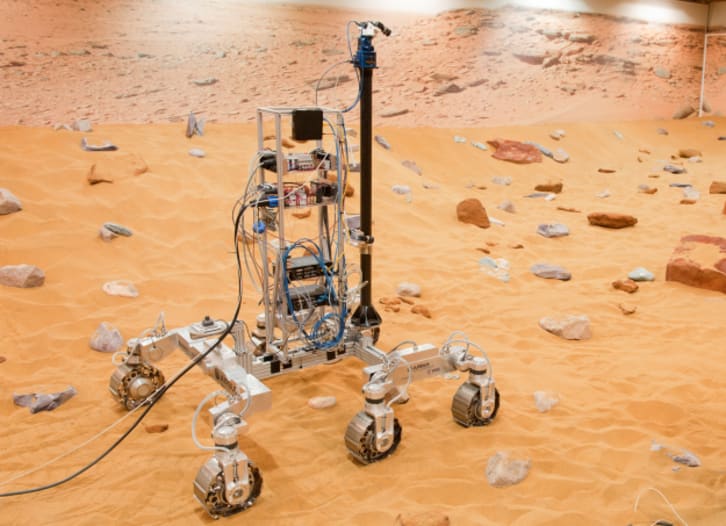 |
| The Rosalind Franklin. |
Among the historical documents on display is the very first map of Mars,
drawn by Italian astronomer Giovanni Schiaparelli in 1877. He
identified darker and lighter features of the map as seas and
continents. "He also famously described the straight lines he saw on the
surface as canali, which then was translated as "canals"
rather than "channels" and sparked the canal craze that led to the
misconception that there might be or have been intelligent life on
Mars," said Watson.
 |
| Schiaparelli, G. V. (Giovanni Vi |
The interactive components of the show will focus on a multi-sensory
experience designed to simulate the conditions on the surface of Mars,
complete with smells and sound, and a family trail that invites visitors
of all ages to solve their own design challenges, by completing tasks
set by experts including British astronaut Tim Peake.

While Mars has always been a fascinating subject for scientists,
designers and dreamers alike, interest for the Red Planet has reached
its peak in recent years. That might be down to the fact that the
technologies required to go there are now mature. But it's also due to
the current state of our own planet, argues Watson.
"The
climate crisis is -- rightly -- frightening a lot of people, and there
is a tendency to think of Mars as a sort of escape hatch for humanity, a
planet B, which is very dangerous and problematic," said Watson.
"But
I think that the endeavor is worthwhile, because all the technologies
required to develop a mission to Mars, such as zero waste habitats and
sustainable farming, have very tangible earth applications that we need
right now."
Jacopo Prisco
No comments:
Post a Comment
Note: Only a member of this blog may post a comment.